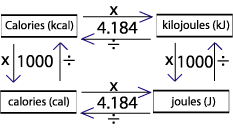Over the weekend, I worked hard to understand how to set up the dimensional analysis for this lab. I started by writing down the things I knew how to convert then tried to connect point A to point B. It ended up being less confusing than I though, but it did take me a while to figure everything. I did a few test trials at home with different sized bags. They were all successful! I felt fairly confident going into the lab today but also a little nervous. Thankfully I was able to pass the lab and move on to studying for the test on Friday!












